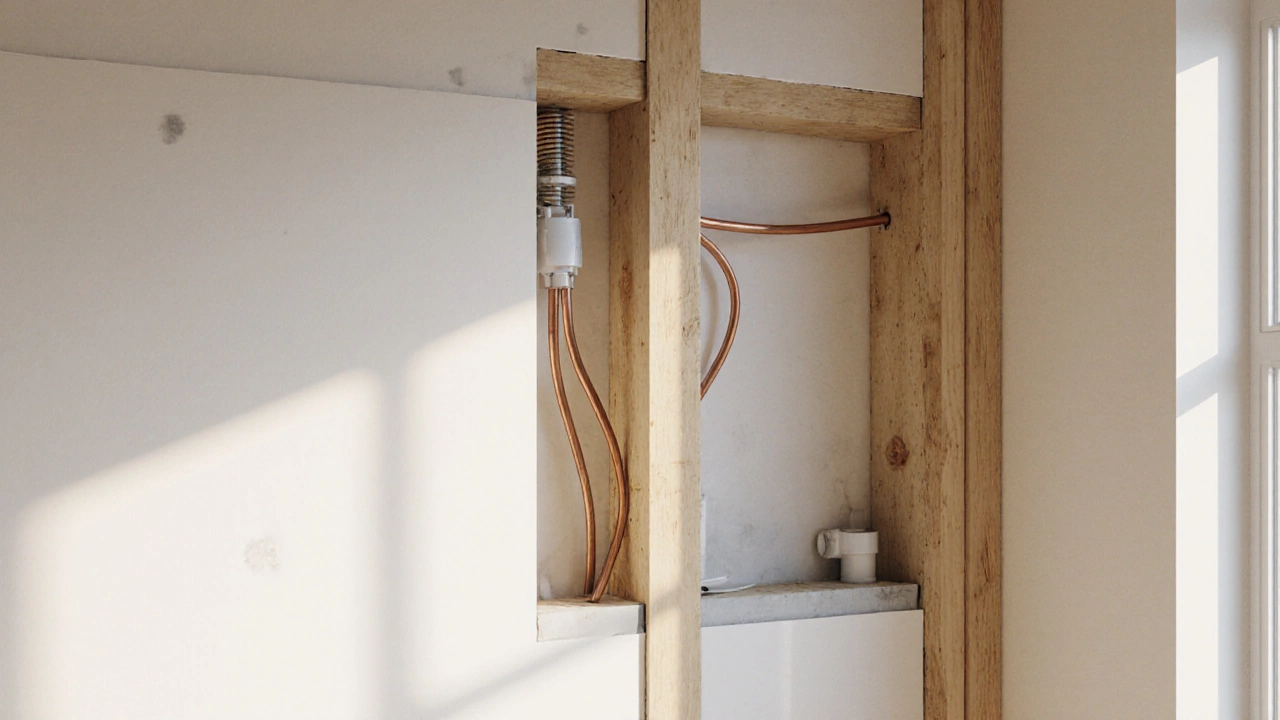Drilling Into New Build Walls: What You Need to Know
Learn how to safely drill into new build walls, understand regulations, locate studs and services, pick the right tools, and avoid common mistakes.
When you need to hang something heavy—like a TV, shelf, or mirror—you’re not just drilling into drywall. You’re looking for the wall stud, a vertical wooden or metal frame member that supports the structure of a wall. Also known as framing stud, it’s the hidden backbone of your interior walls. Without hitting one, your anchor will pull out, your shelf will drop, and your wall might get damaged. Knowing where wall studs are isn’t optional—it’s basic safety.
Studs are usually spaced 16 or 24 inches apart, center to center, running vertically from floor to ceiling. You’ll find them behind drywall in almost every home built in the last 50 years. Older homes might have lath and plaster, but the stud pattern stays the same. The key is knowing how to find them without tearing down the wall. A stud finder, a handheld electronic tool that detects changes in density behind the wall is the easiest way, but it’s not foolproof. Sometimes it picks up nails, pipes, or wiring instead. That’s why smart homeowners use multiple methods: tapping the wall for a solid sound, looking for subtle nail lines or slight indentations, or checking near electrical outlets—studs are almost always on either side.
And don’t forget: drywall anchors, plastic or metal inserts used to hold weight when no stud is available are great for light items, but they’re not a substitute for a stud when you’re hanging something over 20 pounds. If you’re remodeling a bathroom or adding built-ins, knowing stud location affects everything—from where to run wires to how to secure cabinets. Even if you’re not doing a big project, understanding this helps avoid costly mistakes. One wrong drill hole can mean a leaky pipe, a broken wire, or a collapsed shelf.
Most of the posts here touch on home structure, repairs, and renovations—like foundation cracks, bathroom remodels, and DIY fixes. Finding studs ties directly into those topics. If you’re fixing a wall after a leak, installing a new vanity, or hanging a heavy mirror after a bathroom upgrade, you need to know where the studs are. This isn’t just about tools—it’s about building with confidence. Below, you’ll find real guides from people who’ve been there: how to hang a TV safely, when to call an electrician because a stud is in the way, and how to avoid common DIY traps that cost more than they save.

18 October
Learn how to safely drill into new build walls, understand regulations, locate studs and services, pick the right tools, and avoid common mistakes.